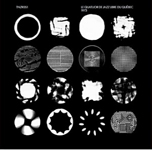|
|
 |
Dusted Reviews
Artist: Le Quatuor de Jazz Libre du Québec Album: 1973 Label: Tenzier Review date: May. 7, 2013 |

|
|
|
 |
More than 50 years after the Ornette Coleman album that crystalized and changed so many things with its title and single epic piece, the phrase “Free Jazz” remains particularly problematic. Are we talking about the “Free Jazz” of the Art Ensemble of Chicago, or of a Cecil Taylor unit, or of the Spontaneous Music Ensemble? Each of these pioneering groups had a sound, or aesthetic, that blended composition and improvisation in unique and often daring ways. The fact that the SME’s music came to be called “British” or “European Improvisation” and that the Art Ensemble makes “Great Black Music” demonstrates the complexity of the semantic situation … and against this contentious verbal backdrop comes, on LP, this previously unissued “Free Jazz Quartet of Quebec”’s radio session from 1973. We are told that this is Quebec’s first free jazz group, which lends the album a certain historical pride of place, but, given the above list of seminal musicians and their accomplishments, there is nothing particularly free about this music, and, to these ears, very little to maintain sustained interest.
By the time saxophonist and flutist Jean Préfontaine, trumpeter Yves Charbonneau, bassist Yves Bouliane and drummer Jean-Guy Poirier taped this session, improvised music hailing from major centers such as New York, Chicago and London, as well as many other places around the world, had undergone several sea changes, flirting and dabbling with electricity and more traditional musics of the cultures in question. Though its proponents and supporters still exist today, the kind of free-for-all high-energy and high-volume improv favored by this quartet was a bit anachronistic. Albums like Albert Ayler’s film score to New York Eye and Ear Control, with its freneticism and free-blown interplay, were long available; variants of its innovations could be heard on majors and independents, which would have made this session somewhat old-fashioned had it been released.
This is not to imply that quality musicianship is absent on this date. The second side in particular boasts beautiful moments, like the flute solo that opens the first track and the eventual inclusion of airy percussion and muted pocket trumpet. There’s also the breathtaking moment, around 5:15 of the same track, where everything stops on a dime, giving way to a wonderfully pregnant pause. Unfortunately, the rare moments of real contrast usually degenerate into meaningless rehashing of free jazz rhetoric without the freedom. Quality control seems to come at a premium as each member of the quartet plays all but heedless of his surroundings and of whatever activity inhabits them. Volume and density take the place of the morphing group dynamics that real freedom brings — the ability to listen, to try different instrumental and registral combinations, to employ contrast.
Ultimately, this is a blowing session similar to those on Prestige from the late 1950s, but without the individual voice of a John Coltrane to guide proceedings. The rough-shod recording doesn’t help matters, but even if the session had been produced under the best sonic circumstances, the music’s quality does not equal its socio-historical importance.
By Marc Medwin
|







